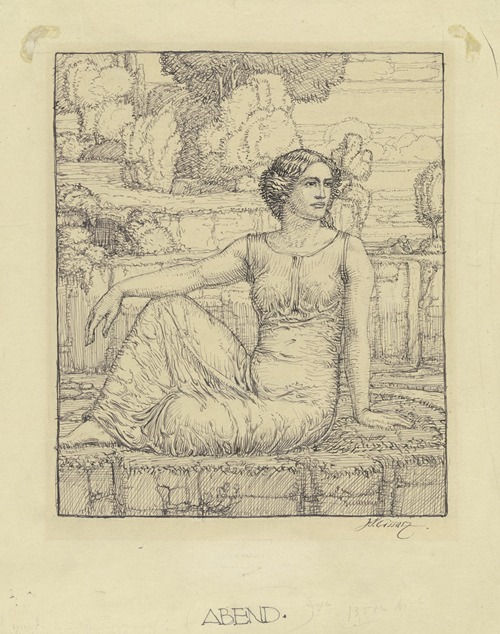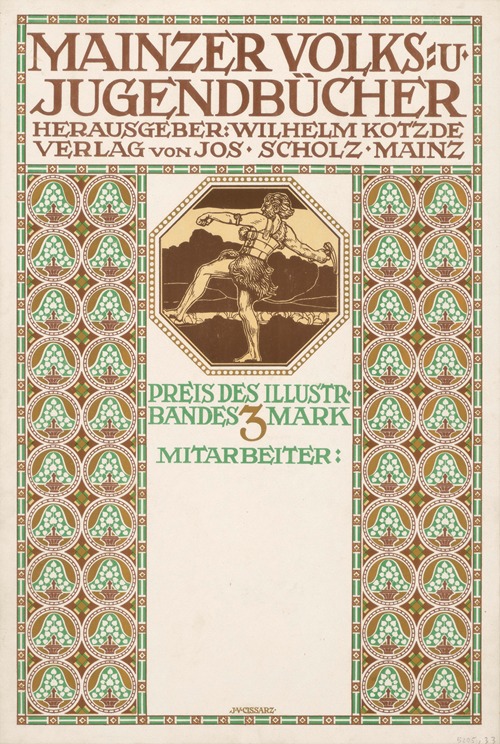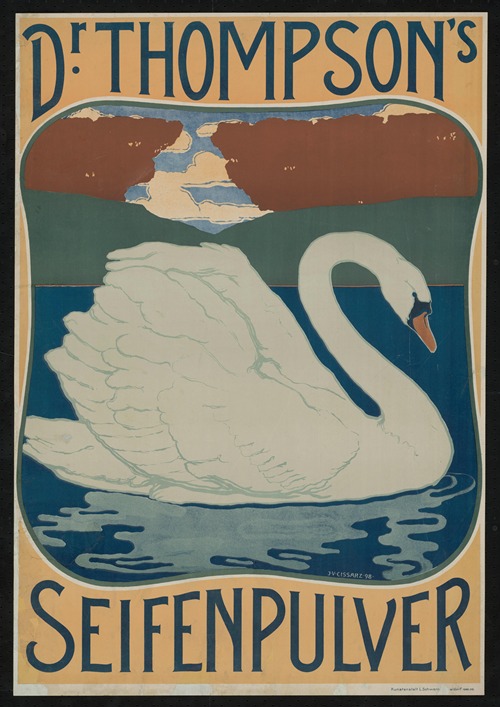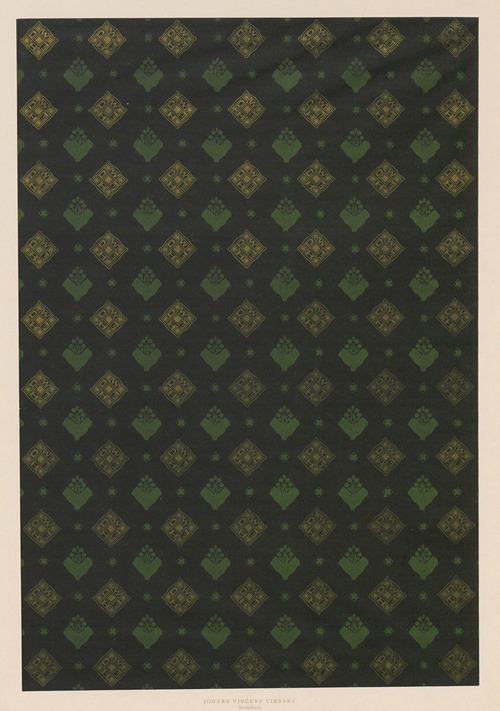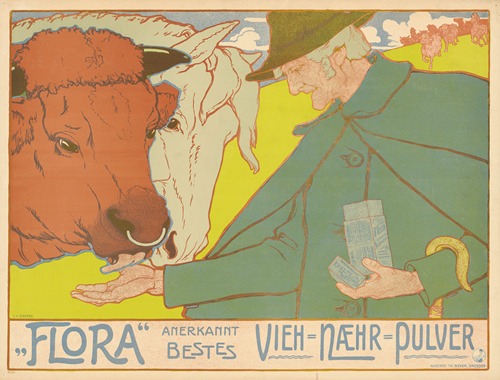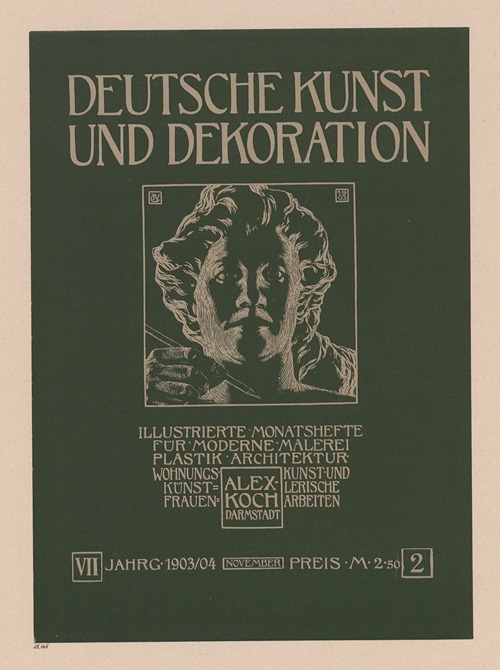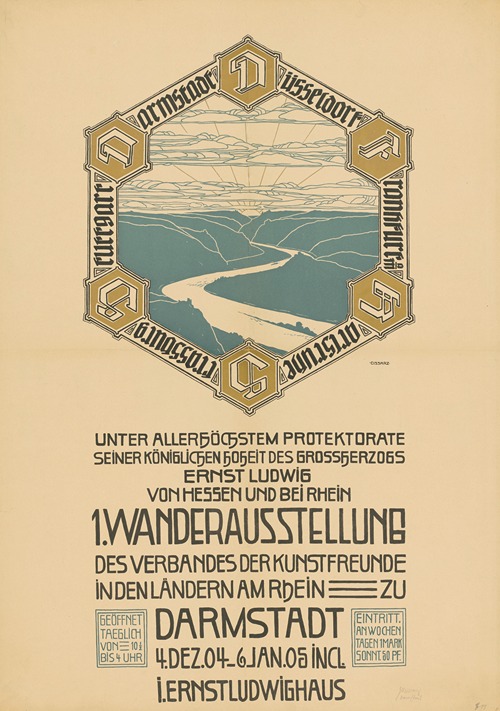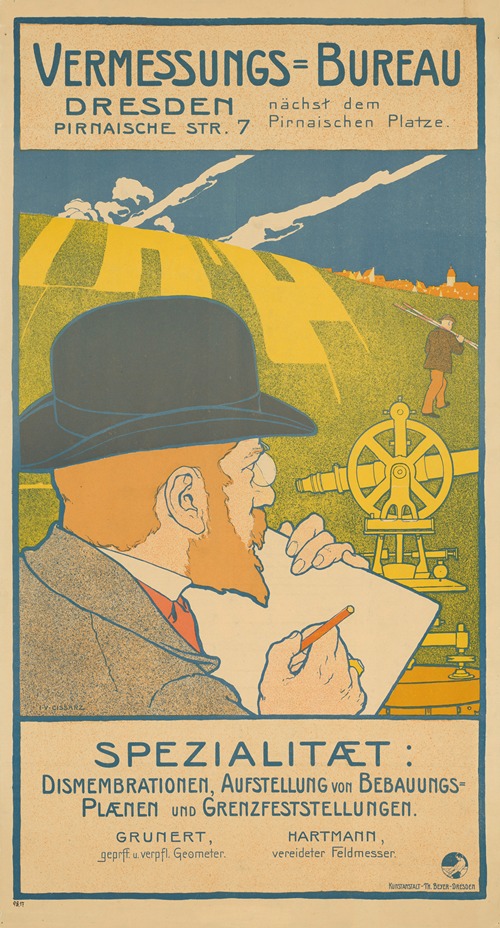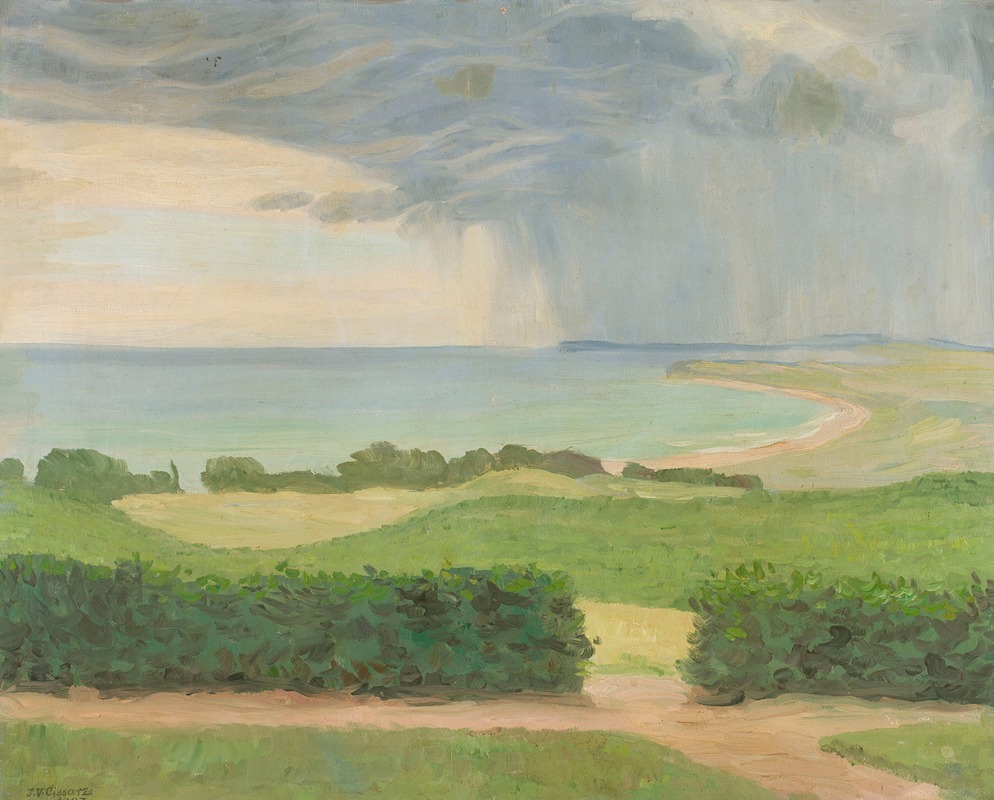
Johannes Joseph Vincenz Cissarz was a German painter, graphic artist, draftsman, interior designer, poster and book artist and designer of handicraft .
Cissarz studied from 1891 to 1894 at the Dresden Art Academy with Leon Pohle and Hermann Freye. In 1895 he became a master student of the Belgian history painter Ferdinand Pauwels for a year. After completing his studies, he worked as a freelance graphic artist in Dresden in 1897. His first own work was an altar painting. In addition, he became known for commercial graphics, such as company graphics, trademarks and picture posters, which were among the first of their kind in Germany. He also designed several publications with book graphics for the publishing house Eugen Diederichs, founded in 1896.
He was among the earliest artistic collaborators at the Deutsche Werkstätten Hellerau. As such, he designed wallpaper and room furnishings. For example, in close cooperation with Karl Schmidt-Hellerau, he developed the first cupboard made of plywood or laminated wood in 1898.
In 1904, for the world exhibition in St. Louis, Cissarz designed a painting for Ludwig van Beethoven's 7th symphony, which found its place in the music room of the German House and was awarded a gold medal.
In October 1906 he was appointed lecturer for book design at the teaching and experimental workshops of the Württemberg Art Friends Association in Stuttgart. From 1908 Johann Vincenz Cissarz was a member of the Deutscher Künstlerbund. In 1909 he became a professor at what is now the State Academy of Fine Arts in Stuttgart. Cissarz took part in the Leipzig Bugra in 1914 and received the grand prize for his graphic work. From 1916 to 1933 he was head of the master class for free painting at the Städel Art Institute in Frankfurt am Main. He continued to teach there until 1939. In 1937 he was honored for his work on the Berlin Olympic Village.
His son was the depositor Arnold Cissarz (1900-1973).
